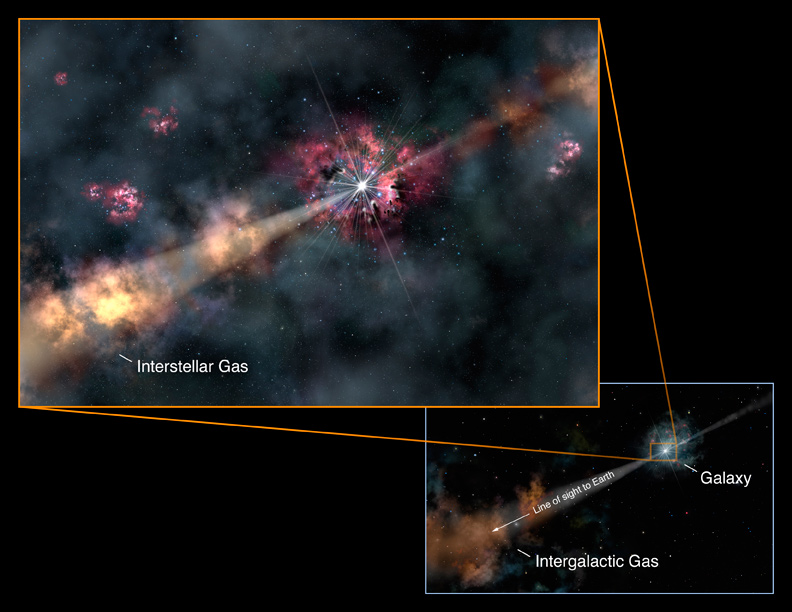Image List
-

This artist's illustration depicts a gamma-ray burst illuminating clouds of interstellar gas in its host galaxy. By analyzing a recent gamma-ray burst, astronomers were able to learn about the chemistry of a galaxy 12.7 billion light-years from Earth. They discovered it contains only one-tenth of the heavy elements (metals) found in our solar system.
Gemini Observatory/AURA, artwork by Lynette Cook -

Before light from the gamma-ray burst arrives at the Earth for astronomers to study, it passes through interstellar gas in its host galaxy (close-up view, left), and intergalactic gas between the distant galaxy and us (wide view, right). This gas filters the light by absorbing some colors and leaves a signature on the light that can be seen in its spectrum. This "signature" allows scientists to characterize the gamma-ray burst, its environment, and the material between us and the distant galaxy.
Gemini Observatory/AURA, artwork by Lynette Cook -

Before light from the gamma-ray burst arrives at the Earth for astronomers to study, it passes through interstellar gas in its host galaxy (close-up view, left), and intergalactic gas between the distant galaxy and us (wide view, right). This gas filters the light by absorbing some colors and leaves a signature on the light that can be seen in its spectrum. This "signature" allows scientists to characterize the gamma-ray burst, its environment, and the material between us and the distant galaxy.
Gemini Observatory/AURA, artwork by Lynette Cook